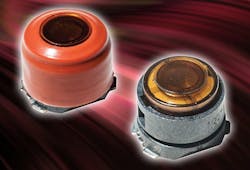Expanded line of rugged switches for harsh-environment applications introduced by C&K
NEWTON, Mass., 17 March 2014. C&K Components in Newton, Mass., is expanding the K12S series harsh-environment surface mount key switch family with improved illumination, environmental sealing, and actuation options.
By employing an advanced material for transparency while withstanding high reflow temperatures, C&K has enhanced the luminosity of the K12S series rugged switches, with a choice of six standard LED colors.
The K12S series key switches now include a version sealed to IP67 standards for use in outdoor applications such as automotive door locks, trunk openers, motorbike handles and other environments likely to encounter harsh conditions. An IP40 version of the switch is available for less demanding environments.
C&K now offers the K12S series switches in DPST, dual-contact versions with a double-step actuation of 6/12N. K12S series key switches feature gold-plated, self-cleaning contacts with low contact resistance (<100 mOhms), 100N overload resistance and life cycles of 1,000,000.
The low PCB-mounted profile makes the switches suitable for mechatronics design engineers to integrate into complex subassemblies requiring precise control for joysticks, remote controls, vehicle cabins, and forklift/crane controls.
In the DPST configuration, the K12S series meets safety requirements for demanding applications in medical, military, avionics. or industrial equipment.
Available in tape-and-reel packaging of 900 pieces, the surface-mount K12S series key switches are compatible with automated pick-and-place equipment.
For more information contact C&K Components online at www.ck-components.com.

